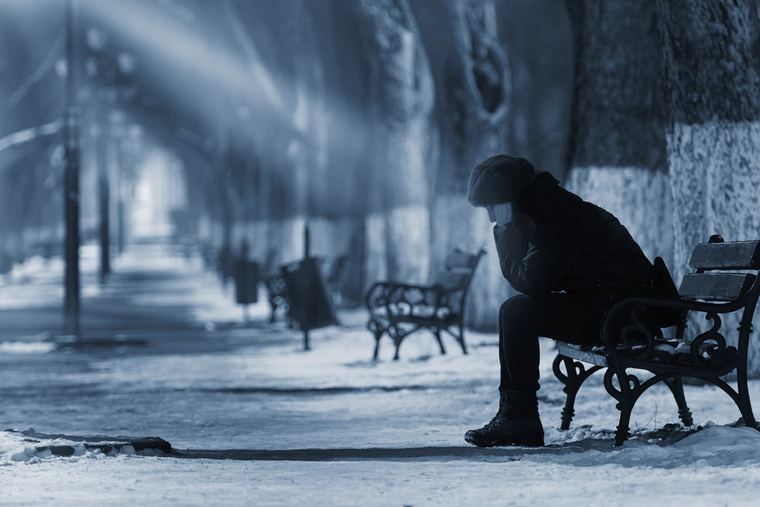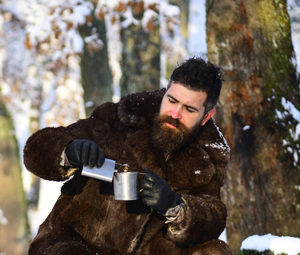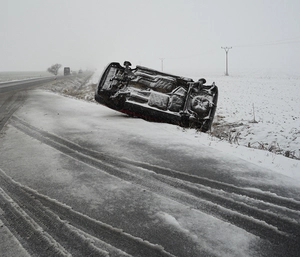Alcohol-Related Harm Escalates During Winter
There are several examples of how people tend to drink more alcohol by volume and to do so more often during winter, indicating the need for effective public health responses and addiction treatment for those who cannot stop drinking.

Though it may seem counterintuitive—as alcohol is usually perceived as a social lubricant and is more often likened to beaches and bonfires than snow drifts and blizzards—people who live in colder regions with less sunlight tend to drink more alcohol than those who live in warm, sunny climates. Research into the issue has found more per capita alcohol cirrhosis cases and other alcohol-related harm occurring in cold climates than in warm ones.
What the Findings Show
As temperature and sunlight hours drop, alcohol consumption increases. That is the central finding of a paper worked on by researchers at the University of Pittsburgh Division of Gastroenterology, published in the journal Hepatology.1
“That is the first study that systematically demonstrates that worldwide and in America, in colder areas and areas with less sun, you have more drinking and more alcoholic cirrhosis.”
The researchers noted that not only does alcohol consumption increase by both volume and frequency during cooler and darker months, but instances of binge drinking and alcoholic liver disease also increase during this period. Senior study author Ramon Bataller spoke to this point. “It’s something that everyone has assumed for decades, but no one has scientifically demonstrated it. Why do people in Russia drink so much? Why in Wisconsin? Everybody assumes that’s because it’s cold. But we couldn’t find a single paper linking climate to alcohol intake or alcoholic cirrhosis. That is the first study that systematically demonstrates that worldwide and in America, in colder areas and areas with less sun, you have more drinking and more alcoholic cirrhosis.” Dr. Bataller is Chief of Hepatology at UPMC, Professor of Medicine at Pitt, and Associate Director of the Pittsburgh Liver Research Center.2
To arrive at the findings, Bataller and his group drew on data from the World Health Organization (WHO) and the World Meteorological Organization (WMO). From the WHO, the researchers examined which countries and states had the highest and lowest alcohol consumption rates per capita. From the WMO, the researchers examined which countries and states had the warmest and coldest weather.
The findings were what one would expect. There was a clear correlation between dropping temperatures and sunlight hours and increasing alcohol consumption, increasing binge drinking, and higher rates of alcoholic liver disease per capita.
Why Do People Drink More When It’s Cold and Dark?

Alcohol does not “warm the drinker up.” Someone who drinks alcohol in an extremely cold environment is at risk of contracting hypothermia, just as someone who is in that same environment but who abstains from alcohol is also at risk. The misconception comes from the fact that alcohol increases the flow of warm blood to the skin. It can give the sensation of warmth, which may explain why people begin drinking more in colder temperatures, even though they put themselves at greater risk for hypothermia (more on that in the next section).
Alcohol consumption is also linked to depression, and depression symptoms tend to worsen when there’s less sunlight and the air temperature drops. People who drink to excess are often depressed, and they regularly use alcohol as a means of coping with depression. While depression can occur during any time of the year, the lack of sunlight and the cold temperatures serve as triggers for many people to feel sad, anxious, depressed, or apathetic.
Hypothermia: One of the Risks of Drinking When It’s Cold and Dark
Drinking alcohol in cold climates is often associated with hypothermia. Even though one gets the feeling of being warmer while consuming alcohol, what occurs is that the alcohol they have consumed enters the bloodstream and dilates the blood vessels, increasing blood flow to the limbs (making one feel warmer). But then, blood flow to the limbs causes critical organs to lose heat. The result? The body’s overall core temperature drops and the individual becomes more at risk for hypothermia.
People are also more likely to suffer hypothermia while drinking because their judgment is impaired, and they think they’re warm, but they still need that winter coat. “People feel warm, so they don’t put on gloves, they don’t dress appropriately, and then you take that to the extreme when people drink to a terrible excess, they [can] pass out in the snow outside,” said Dr. Michael Dick. “You then see the severe cases of hypothermia or frostbite.” Dr. Michael Dick specializes in emergency medicine at The Ohio State University Wexner Medical Center.3
Drunk Driving Is Always Dangerous and Even More So During Winter

Driving on icy, snowy roads, driving in snow storms when visibility is impaired, and driving during snowmelt when the roads are wet makes the roads more dangerous and more challenging. All of these factors compound during the winter months. Drinking and driving is extremely dangerous and unacceptable due to the risks it poses to everyone who uses the road. And though it is always dangerous, drunk driving is arguably more dangerous during winter.
The main reasons why drunk driving is so dangerous are that alcohol slows reaction times, alters perceptions, and hampers judgment. That makes operating an automobile unsafe under even the best of conditions. When the roads are slippery and visibility is poor, the risk factors increase exponentially.
The Need for Addiction Treatment
People who struggle with alcohol addiction need help no matter the time of year, but the urgency is even greater during winter. During winter months, alcohol addicts face additional risks, including but not limited to heightened risks to their physical health via hypothermia risks and heightened risks for everyone else due to drunk driving during inclement weather. If you know someone who drinks to excess and cannot stop, please help them find and enter a qualified addiction treatment center as soon as possible. Please do not wait until it is too late.
Sources:
-
AASLD. “Colder Weather and Fewer Sunlight Hours Increase Alcohol Consumption and Alcoholic Cirrhosis Worldwide.” American Association for the Study of Liver Diseases, 2018. aasldpubs.onlinelibrary.wiley.com ↩︎
-
UPMC. “Colder, Darker Climates Increase Alcohol Consumption.” University of Pittsburg Division of Gastroenterology, 2018. upmc.com ↩︎
-
Accuweather. “How drinking alcohol makes you vulnerable in cold weather.” Accuweather, 2023. accuweather.com ↩︎





 ®
®